The Human Cultures of Mirrodin
This content was deleted from the Magic website during an update. The original page can be accessed via Wayback Machine here.
By Doug Beyer
Mirrodin simmers with conflict. More of the foul Phyrexians emerge every day, boiling out of the hidden spaces of the world, gathering their forces for a major offensive that will carve their unequivocal mark on the surface of the plane. Mirrodin teeters on the brink of a history-scarring battle; scant hours separating it from the impact of a full-scale Mirran-Phyrexian war.
Today, as the shadow of war threatens to blot out the suns, we take a moment to observe some of the Mirran cultures—the five cultures of humans on Mirrodin. Think of this as a museum exhibit of humanity, a collection of artifacts and anecdotes meant to capture and document a people’s existence at one crucial moment in time. In the coming weeks, as Phyrexia’s full might comes to bear on the plane, no experience will be spared. No account of history will remain unchanged. No life will fail to bear a scar.
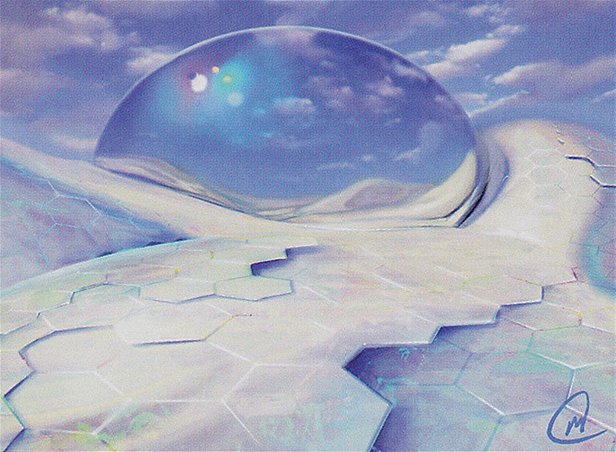
Take a moment to read through these esoteric facts, documents, and observations about each of the five human peoples of Mirrodin. Much of this text is taken directly from the Scars of Mirrodin style guide, the document used to create the storyline and flavor aspects of the card set. Many Bothans died—I mean, many world-building writers toiled—to bring you this information. I hope you enjoy.
The Auriok
The Auriok are the white-aligned humans of the Razor Fields, a resourceful, persistent, and resilient people. Auriok skin is naturally deep bronze, flecked with glimmering, deep golden and silvery metal. This is then reinforced with gold panels and jagged plates. Their white hair bleaches to help reflect the almost permanent sunlight that falls across the Razor Fields.
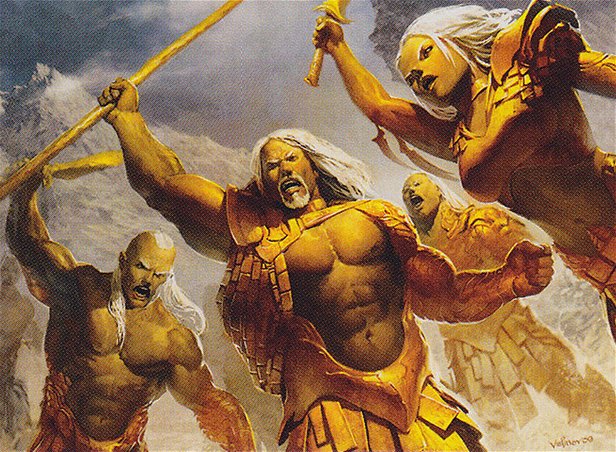
The Accorders. The Auriok are not a unified nation; each settlement is essentially its own tiny city-state, with rules and governance largely unto itself. In lieu of a grand military force, Auriok settlements are protected by the Accorders—a troop of traveling Auriok soldiers and spellcasters that move from community to community as needed. The Accorders enforce Auriok law impartially, following the principles of the Accord of Equity, a sort of statement of rights for the Auriok people.
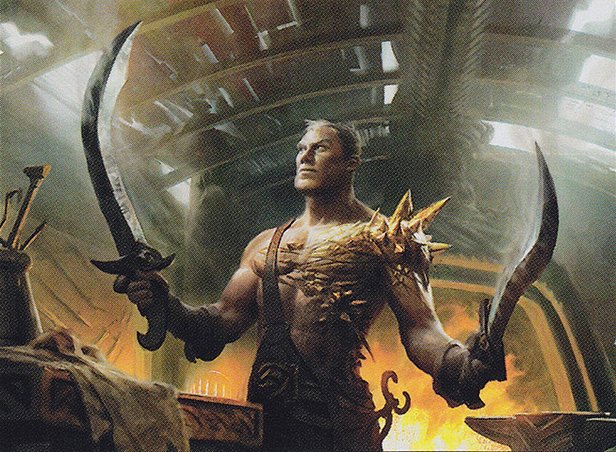
Banesaints. If an Auriok ever calls you their banesaint, take offense. Each young Auriok chooses a reviled figure from Mirrodin’s history, their banesaint, to serve as an exemplar of evil, a cautionary tale of choices to learn from and not to follow. The Auriok studies the life and mistakes of the banesaint, shouldering some responsibility not only to avoid the evil values that their banesaint represented, but also to ease and correct some of the harm caused by the banesaint’s actions. Sometimes an Auriok’s banesaint is related to him or her by blood, such as an ancestor who brought shame to the family; taking on a familial banesaint is considered especially conscientious. It’s traditional to adopt only dead figures as banesaints; when the term is applied to a living person, it’s to be taken as a slur or curse. Banesaints need not be human; any sentient being with a history of wrongdoing can serve as one’s banesaint. Some especially notorious villains have been taken as banesaints by many Auriok; other Auriok choose more obscure figures, helping to warn their generation against lesser-known wickedness.
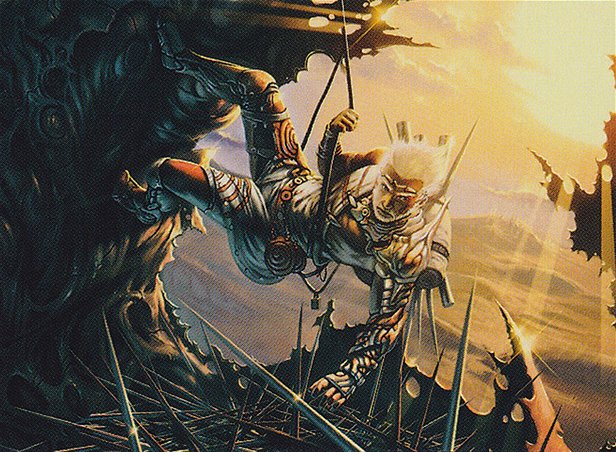
Bladehold. The largest Auriok settlement is Bladehold, a center of commerce and artisanship built on a mesa above a huge swath of particularly tall and sharp razorgrass. The most celebrated Auriok fighters train in the dense razorgrass. Bladehold soldiers invented a technique called mirroring, in which one uses one’s reflection in the surrounding blades of razorgrass to confuse an enemy and gain positional advantage.
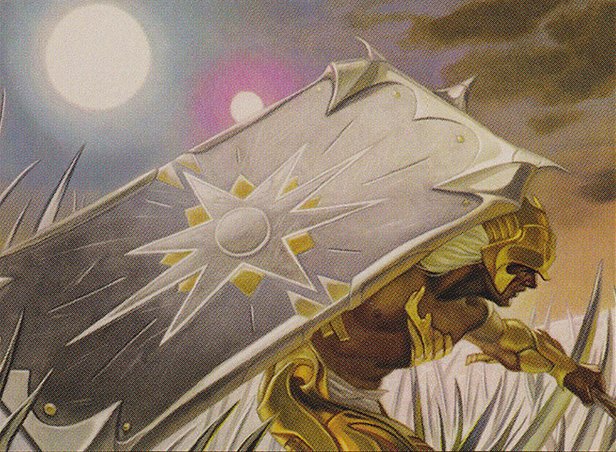
The Neurok
The blue-aligned Neurok have found themselves in an impossible position on Mirrodin. After the fall of the planar caretaker Memnarch, the Vedalken, and their brain trust known as the Synod, solidified their power over the Quicksilver Sea and its surrounding realms—leaving the Neurok as second-class citizens. For years the Neurok have relied on the thought-expanding power of the serum, a liquid extracted from Mirrodin’s blinkmoths. But as the blinkmoth populations have plummeted and serum becomes more precious, the Synod laid claim to all the serum on the plane.
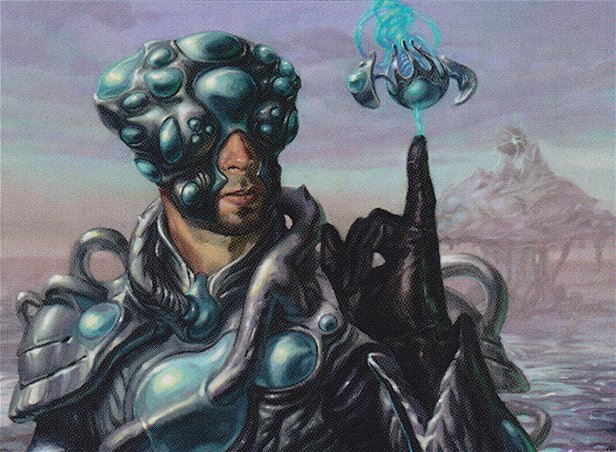
Quicksilver Spires. Curving, forking spires of chrome rise out of the Quicksilver Sea, some reaching hundreds of meters tall. Metal catwalks and bridges connect many of these spires, and the spires themselves are filled with chambers, balconies, and staircases formed from the metal that comprises them. These spires are used as dwellings by vedalken and Neurok alike.
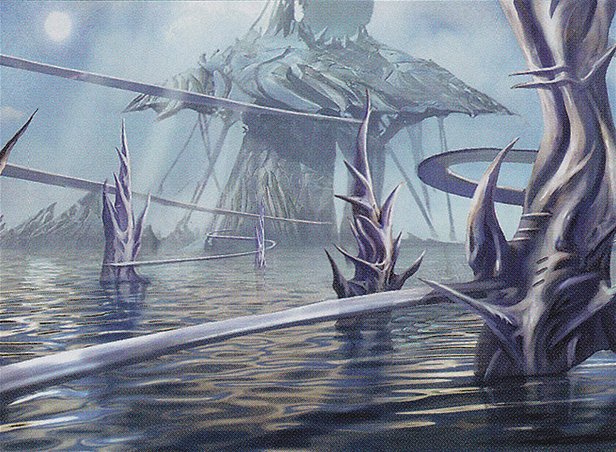
Neurok Networks. Without access to serum, some Neurok saw themselves destined to become a class of slaves. The Neurok began to form secret sects to undermine the vedalken. These sects of assassins, thieves, and other rogues became known simply as “networks.” The most powerful of the networks were the Covalt network (led by Vy Covalt) and the Vrist network (led by Kala Vrist). The networks became masters of pilfering and producing illegal serum, stealing from vedalken archives and even assassinating Synod members. The more clever networks also procured vedalken Synod secrets and used the information for blackmail purposes.
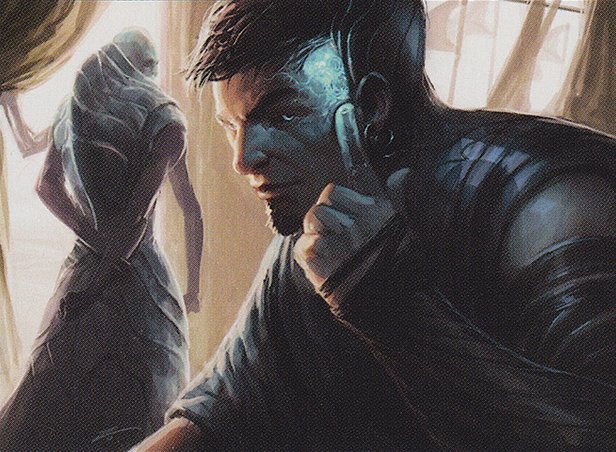
Litera Phials. The Neurok networks soon learned that older vedalken libraries were less well guarded. These libraries were not filled with books or scrolls but small vials of a magical liquid metal known as quicksilver. Thieves soon learned that when these vials were emptied onto a flat surface, the quicksilver formed symbols—and together, they formed whole libraries of knowledge. Through the Litera Phials, as they were called, the Neurok gained a competitive advantage over the vedalken, even learning the secret to destroy a key vedalken weapon.

The Battle of the Synod. The Neurok struck a blow to the vedalken, issuing a code that powered down the hoverguards and wanderguards—the vedalken’s floating, magically constructed enforcer drones. This led to a massive battle between the Synod and the Neurok. The Synod was defeated, but hundreds died on both sides—and vedalken leaders moved quickly and secretly to fill the vacuum of power left by the Synod.

Uneasy Truce. Leaders between the Neurok and the vedalken reached an uneasy truce. They agreed that the Neurok would share a small amount of their captured serum with the vedalken, while the vedalken would share fragmented pieces of their knowledge from the mysterious Knowledge Pool. It has become common to see Neurok merchants haggling for bits of information from vedalken sages in the halls of Lumengrid, the capital of the Quicksilver Sea. Today vedalken primarily inhabit the upper portions of Lumengrid, and the lower, broader portion of the city is populated by Neurok. Some Neurok leaders wonder now whether their efforts were worth the cost.
The Moriok
The Moriok are humans who have adapted to life in the Mephidross. As they remain in or near the Mephidross, their skin grows pallid, and eventually patches of lead-like metal emerge from beneath the skin. They now live in scattered tribes in the tainted landscapes at the edge of the Mephidross. Few roam deeper into the fen, unless they seek some old secret or wish to face the vampire warlords who vie for power within. The only exceptions are the Disciples of Geth, who live in Ish Sah, the Vault of Whispers.
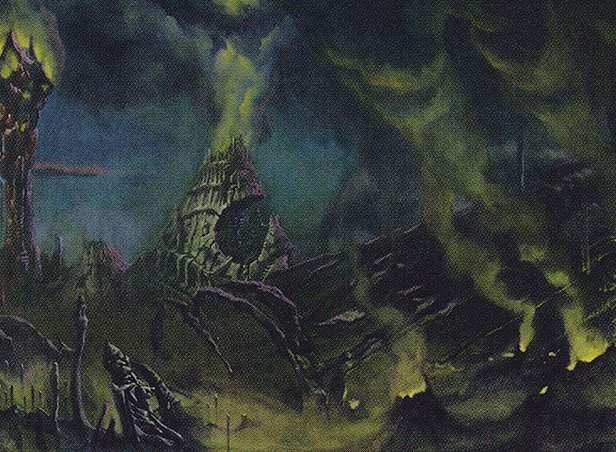
Smaller Tribes Within the Moriok.
Ghost Maw clan. This tribe of Moriok follows the edicts of ghostly leaders trapped within reliquaries created by vampires known as the Bleak Coven.
Black Blood clan. Members of the Black Blood tribe ingest sludge from the Glistening Dunes, believing it will inhibit the effects of necrogen. Unfortunately it has the side effect of driving the tribe’s members mad with hunger.
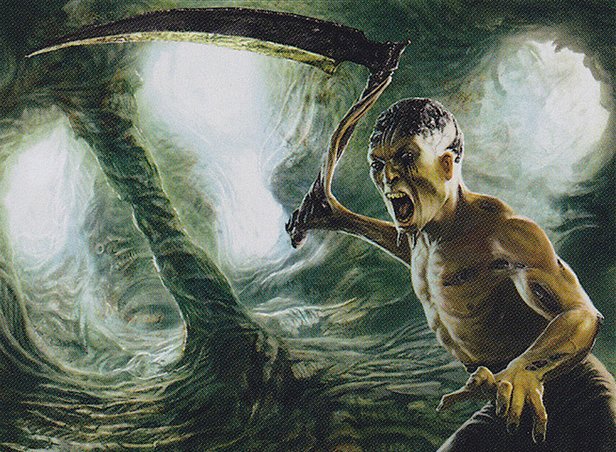
Veiled Eye clan. Many Moriok are blinded by the necrogen gas, but the members of the Veiled Eye tribe intentionally blind themselves to gain “greater vision.” Some gain gifts of precognition and clairvoyance through these eldritch blinding rituals, and those who don’t become their acolytes.
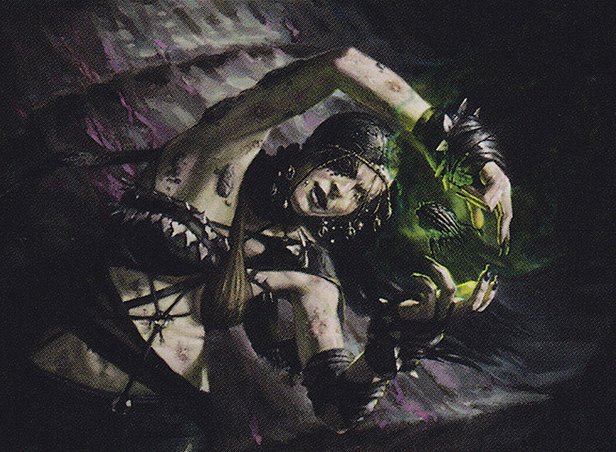
Gray Ladies clan. The warrior-women known as the Gray Ladies trade the sons born among them as currency with undead that feed on the living or with the living who need living subjects for their necromantic magic.
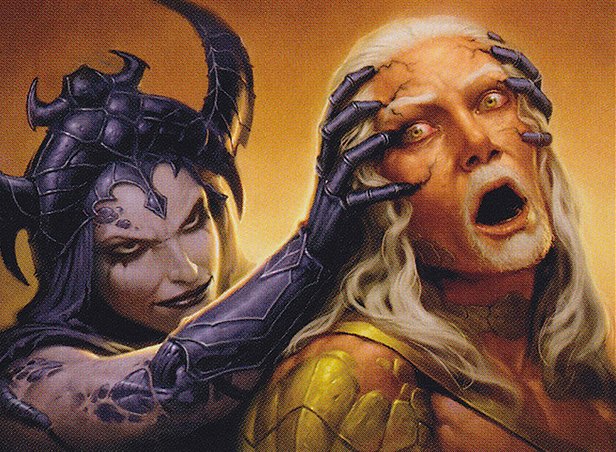
Even for a culture that lives in the necrogen-choked Mephidross Swamp, the Moriok have had to endure more than their fair share of death and pain. The undead of the Mephidross have wreaked great harm on the Moriok of late. Here is one account of the Nim Onslaught, which occurred after the Vanishing, the event in which the elder generations of Mirrans disappeared.
“When the Vanishing wracked Mirrodin and ended the Leveler War, the machines stopped lifeless in an instant. The levelers ground to a halt as one. It was as if each of our fathers and mothers took a dozen—nay a hundred!—of the spirits of the machines when they fell. If only those sacrifices had ended the conflict.
When the Leveler War ended, the Nim Onslaught began.

The machines stopped, and the nim stopped as well. They dropped to the earth, lifeless as their rotted flesh should be. Those quick of wit and strong of spirit didn’t hesitate to take advantage and cut down as many nim and machines as their exhausted bodies and minds could bear. Most of us stood dumbly staring about or cowered in cover from the falling machines.
The machines never awoke, and their corroding hulks still lie scattered across the landscape. But the nim—the nim merely slept. I have often wondered what their rotten minds comprehended in those moments. Did they hear their brethren’s bodies being hacked apart? Did they see us weep in fear and confusion? Did our weakness make them hate us, or were they simply hungry for our lives?
Eventually, even the stoutest hearts tired of the butchery. Even the most war-madden or grief-enraged warrior dropped his sword and sought comfort among those who survived. And it was then that the nim awoke.
In the darkness of the setting suns, they came at us—first as single slaughterers but then in vast waves. Our leaders killed or vanished, more than three-quarters of our number dead or gone—order had gone with them. None were prepared.
The history of the Nim Onslaught cannot be carved into the Great Stone as a series of glorious battles. No generals marshaled ranks in the field. The Massacre was countless struggles for survival. Thousands of desperate individuals or small groups fighting just to live long enough to see the next sun drift above the horizon.”
The Moriok known as Xanafar, from his Journal of the Dawn Age
The Vulshok
The humans of the Oxidda Chain have undergone a more dramatic transformation than Mirrodin’s other humans— Vulshok hands, feet, and heads are covered in heavy, angular, mutable iron, and their internal temperatures can spike hot enough to melt or ignite many other materials (besides their own flesh). The Vulshok have adapted greater muscle mass and bone density to compensate.
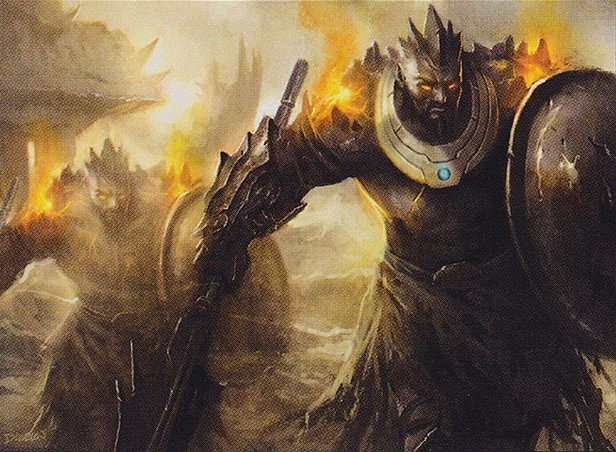
Among the Goblins. Goblins have thrived in Oxidda, all but squeezing out the Vulshok with rapid procreation and expansion. Although the goblins take great pride in their dominance of the region, the Vulshok have maintained a small but stable population and have avoided getting embroiled in some of the plane’s larger conflicts. The Vulshok tribes are isolationist and scattered, separated from each other by terrain as well as areas of goblin control.
Content with Less. Although Vulshok are mercurial and have extreme emotional responses, they are neither ambitious nor competitive. As a result their population and tribal structures have remained constant for many decades. They have not made significant gains in territory or in artifice, and that suits them just fine.
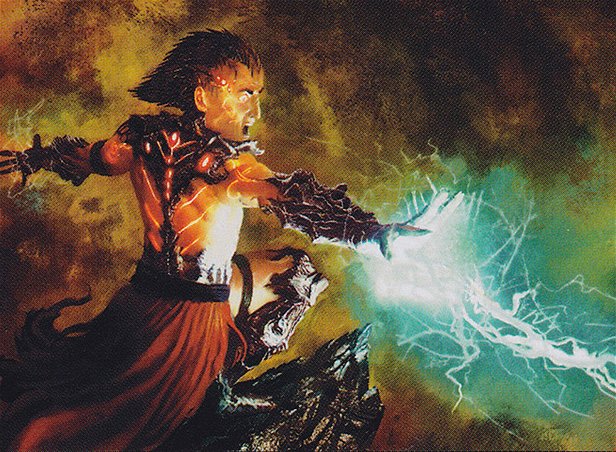
Heart of the Forge. As Vulshok social groups stabilized, permanence and endurance were increasingly valued, and the forge became the primary symbol of those values. Vulshok smiths take great pride in their craft, and Vulshok “fruit of the forge” is judged by its weight, durability, and the honesty of its manufacture. This valuation of permanence comes through in how Vulshok deal with outsiders, too: If a Vulshok surmises that a relationship is temporary or circumstantial, they will be gruff and detached. Why bother with something so transient? Lasting relationships, like lasting weapons, take time and care to forge.
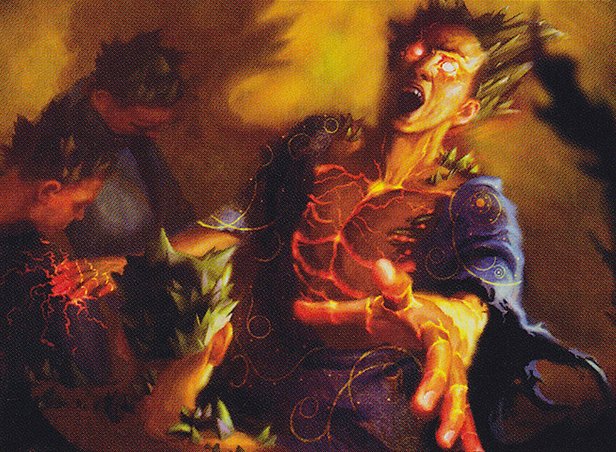
Alloyed, Allied. Because the Vulshok value stability and craft, over time each tribe has developed specializations in their smithing, and Vulshok smiths avoid directly competing with one another. This division of duties also encourages the tribes to depend on each other and to mutually visit when items are needed. In fact, over time the tribes discarded their family identities in favor of their smithing ones.
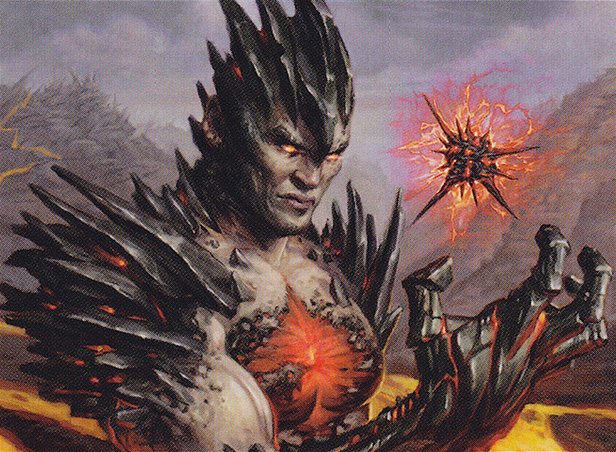
Forge-Tribes. Six so-called “forge-tribes” exist in the Oxidda Chain, although the Vulshok are insular enough that this structure isn’t at all clear to outsiders, nor are the Vulshok inclined to explain it.
Spear. This highland tribe creates weapons and tools with points, spurs, or piercing function. They are quick to act and quick to anger. Their shamans tend to wield lightning magic.
Hammer. This lowland tribe specializes in blunt instruments and armaments. They are natural wielders of earth-magic. Also are able to use the metal of the mountains themselves as a weapon.
Blade. Smiths of the Blade tribe are experts at creating edged tools and weapons. Although others think of the highland-dwelling Blades as arrogant, their ability with fire magic is unmatched and unquestioned.
Shield. The Shields are semi-nomadic, moving from region to region to serve the other tribes. They are builders of houses, walls, shields, and other protective elements. Their magic tends to bolster endurance and resolve.
Helm. The forges of this lowland tribe produce armor but also finer instruments—things that require care. Members of the Helm also conduct intertribal unions, both social and nuptial. Helm mages wield emotions as weapons, able to cause fits of rage or fear.
Anvil. The Anvil tribe occupies the deep valleys and ravines of Oxidda, and they refine and supply metals and smithing goods for all the other tribes. The Anvil tribe also resolves conflicts and disputes. Their shamans are valued for their battle magic.
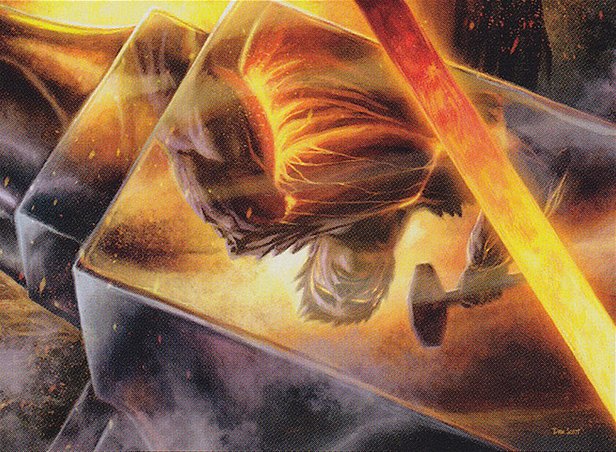
The Anvil Cracks. After years of relative peace between the forge-tribes, the ingots forged by the Anvil tribe turned brittle and inconsistent. Something was wrong with the molten metal of Oxidda, all of which passed through Kuldotha itself. The tribes, deprived of their work and their meaning, turned on each other. For the first time in generations, there was open war among the Vulshok.
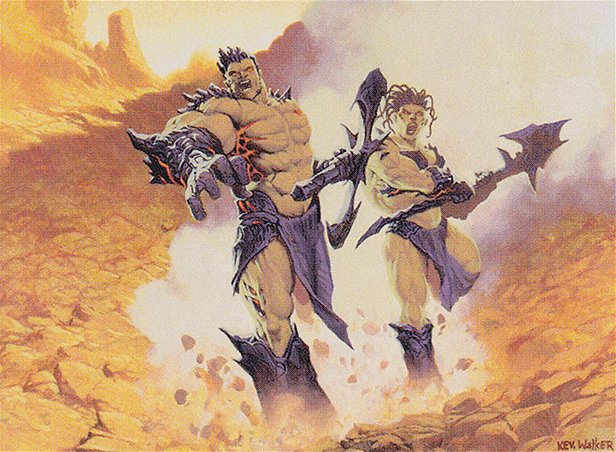
Enter Koth. A young leader emerged, not from the Helm or Anvil tribes, as was the custom, but from the Hammer tribe. The young man was a savant of earth magic and believed he could purify the ore, even if it was only one day’s worth at a time. He approached the Anvil and offered his help. With the solidity of the metal restored, the skirmishes between tribes slowed. It took all of Koth’s ability to purify enough ore to meet the renewed demand, and the fighting that persisted was often over which tribe should be supplied next.

The Sylvok
The Fifth Dawn era propelled the humans of the forest-like Tangle, the Sylvok, in a new cultural direction. While some of their leaders were involved with Glissa and the battles against Memnarch, these individuals disappeared in the Vanishing, leaving the Sylvok with little information about the cause of the new sun or what was going on in the rest of Mirrodin. During the leveler attacks, and later during a bitter conflict between the vedalken and elves, the Sylvok were exposed to forms of artifice they’d never seen before. Instead of hating or fearing artifacts like the elves, they co-opted them into their belief system about the natural world. The Sylvok began to try to find “perfect” representations of the natural world as a form of worship.
Post-Dawn Radix. In the aftermath of the Fifth Dawn, the Sylvok built a shrine around the green lacuna that was once known as the Radix. They called it the Araneas Altar, an eight-sided construct to honor Lord Araneas, a mythological spider-lord from Tangle folklore. Crafted from found metal, the Araneas Altar resembles a giant metal spider when viewed from above. The “heart” of the spider is the giant hole that was formerly the Radix. The elves also consider the Radix a sacred place, particularly because of the lamina, which are strange, metallo-organic growths that sprout up like foliage from inside the planar core.
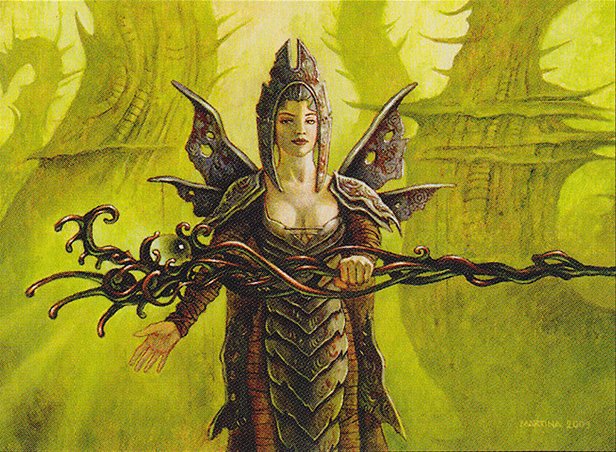
Druidic Rule. The humans of the Tangle are potent shamans and druids who prefer to fight with spells rather than weapons. The Sylvok adopted a hierarchical system of rule based on a chosen group of druids, much like the Tel-Jilad Chosen. Powerful druids are revered and have the most power in Sylvok society.
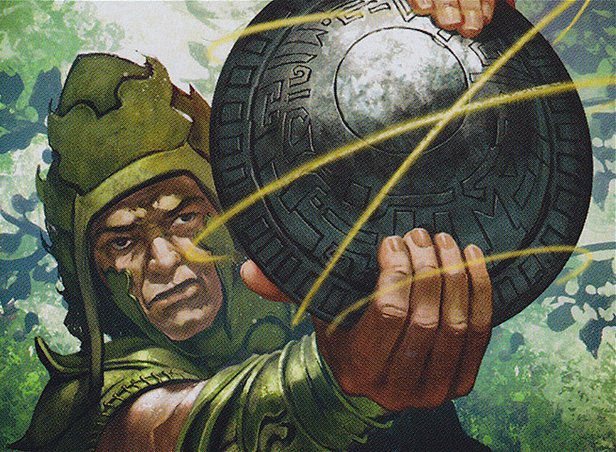
Animal Worship. Half the Sylvok population disappeared in the Vanishing, and almost all of the most powerful druids disappeared. One of the few remaining skilled druids, a young man named Benzir, became the de facto leader. Using the poison of a needle-snake, Benzir embarked on a vision quest in an attempt to find the Vanished. In his vision, he saw a woman take the form of a copper-plated wolf with the horns of a stag. Based on this, Benzir told his tribe that spirits of the Vanished had been housed in animal bodies. He believed they had “ascended” to a higher form in the natural world. This has led to a culture of animal worship among the Sylvok; to the Sylvok, every creature is potentially the current form of a missing elder.
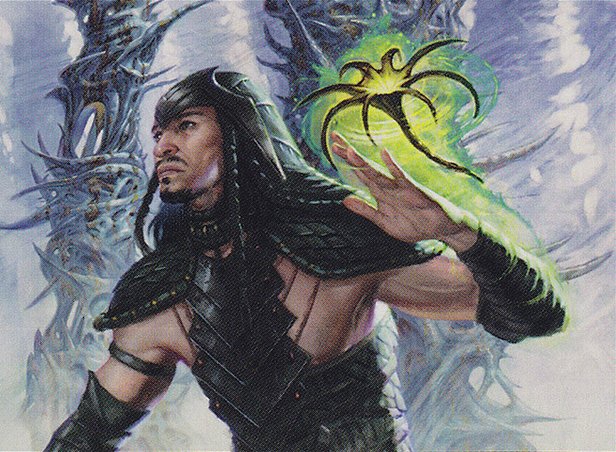
The Times to Come
That’s the state of the human cultures during the first appearances of Phyrexia on the plane. Now these five proud, durable cultures face the ravages of infectious, oil-blooded nightmares that crawl from the pits and shadows of their world. As is our custom, the next set, Mirrodin Besieged, will crank up the stakes and the conflict, and with them, the potential for both tragedy and hope. It will be a true test of what it means to be Mirran—and a horrifying test of what it takes to remain human.
Letter of the Week
Today’s letter comes from Luke.
Dear Doug Beyer,
Every week, around Friday afternoon, I change my computer’s background to the “Daily MTG Wallpaper of the Week.” This week’s is the “Molten-Tail Masticore” from Scars. This got me thinking about what a Masticore is. Up to this point I have had no success. So … what is a Masticore, and more importantly what is the difference between it and a Manticore?
Thanks,
Luke
They’re definitely close. While a manticore is a flying, ferocious, red-aligned, lion-like beast, a masticore is a non-flying, still-ferocious, metallic lion-like beast. Masticores usually have a stinging, barbed tail just like a manticore, but they also tend to have lines of razor-like metal teeth (for to do the masticating). Check out this quick history of Masticores in Magic:
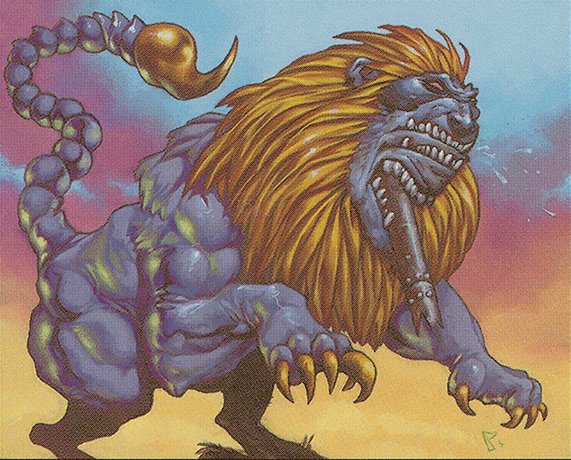
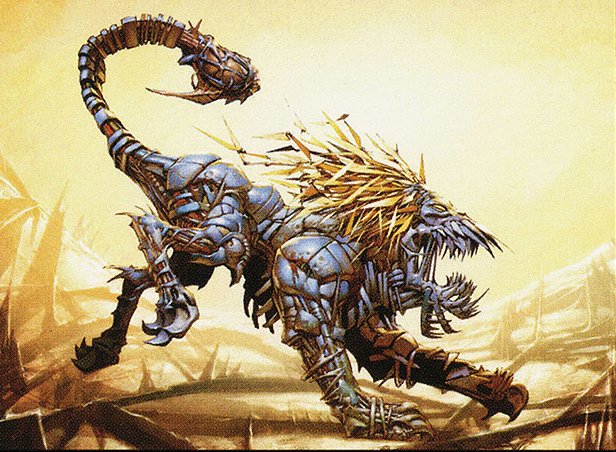
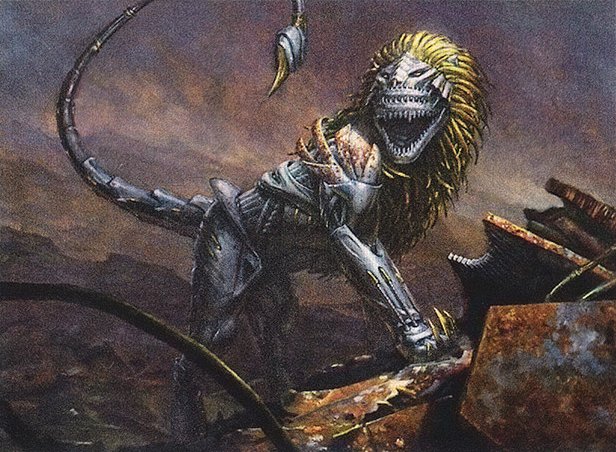
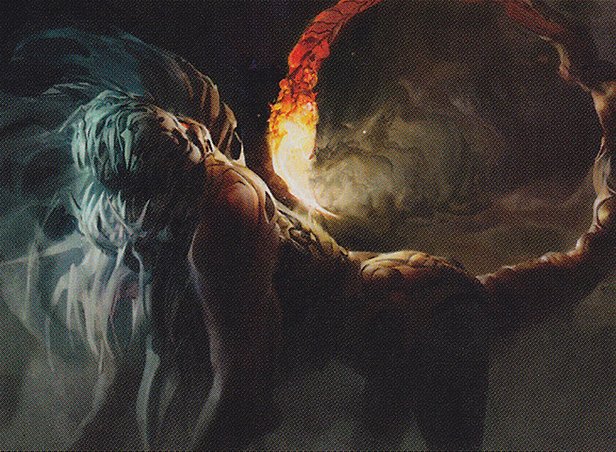
Now compare with a representative Manticore:
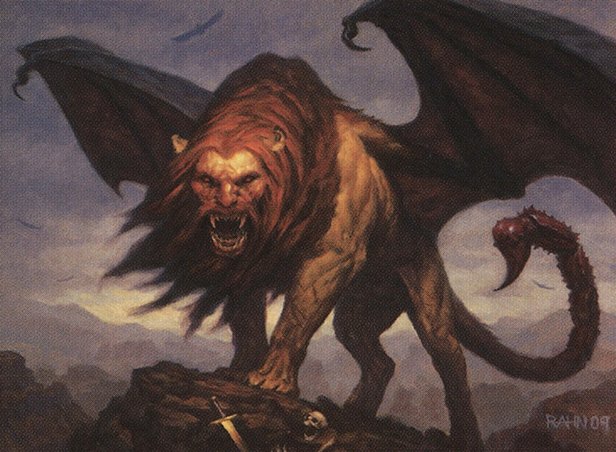
Manticores are fleshy and flying; masticores are galvanized and grounded. Thanks for writing in!
